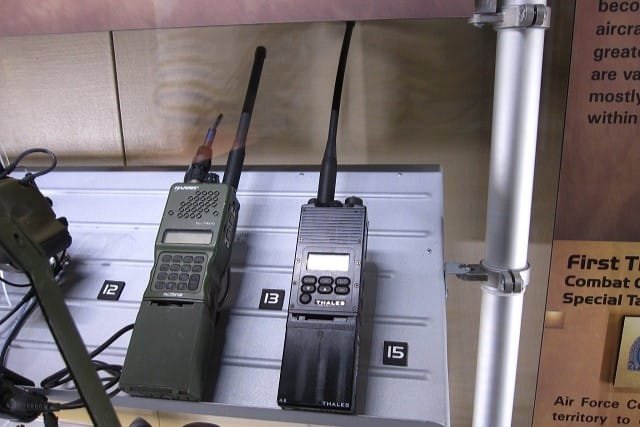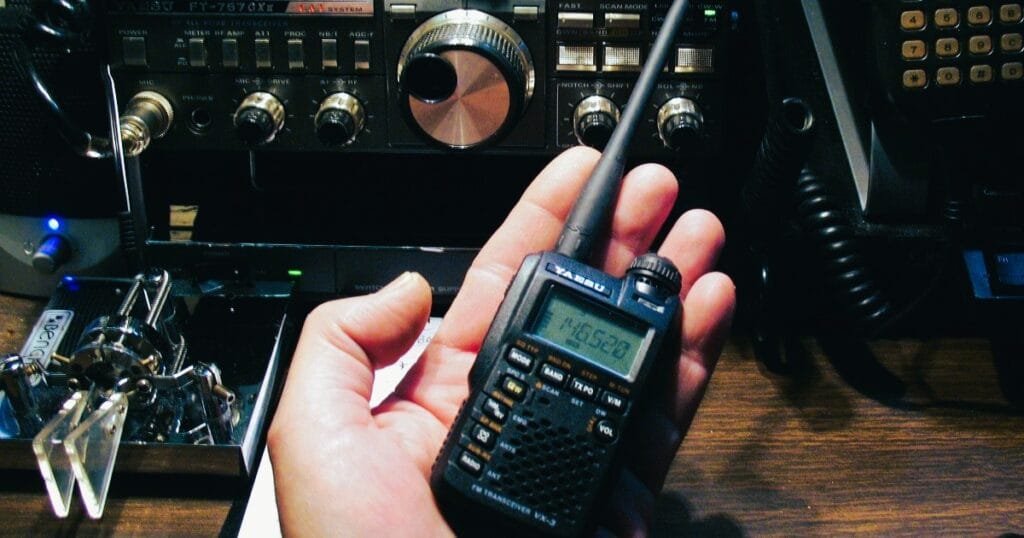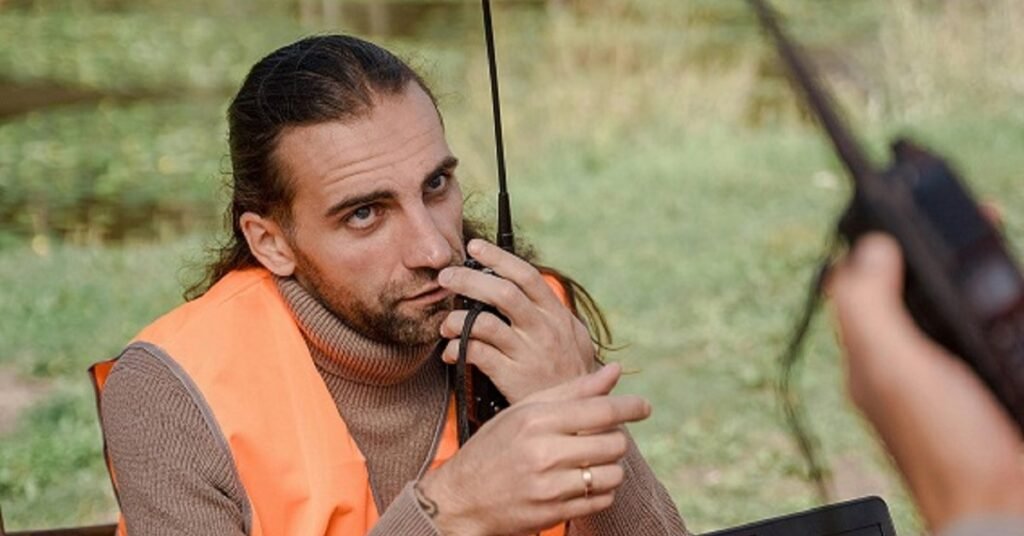Table of Contents
ToggleHow Does a Walkie-Talkie Work? A Comprehensive Ham Radio Review
For my nephew, I bought a tiny FRS(Family Radio Service) walkie-talkie for his recent birthday. My goal? Teach him the basics of two-way communication whilst also providing a handy tool on his trips. He is a charming boy who likes to explore. When everyone around him is enjoying a smartphone, I like to introduce him with radio communication technology. Where he can get some knowledge and most importantly that will help him in many ways. For safety, I gave him a FRS walkie-talkie. These types of ham radios are very easy to use and they don’t need a license to operate them. Just press the PTT button and transmit your message. This one little tip allows you to start making contact immediately. No more waiting for a signal, no more dialing of numbers. Due to their simplicity, they are an ideal platform for reliable, speedy communication in a wide range of use cases.
Not too long ago he asked me how his walkie-talkie worked, and then I thought of other stuff. I tried to discuss the basics of radio communication with him and though maybe some of you also need to know. So let’s begin.
What is a Walkie-Talkie?

Basically, a walkie-talkie refers to a remote and movable communication setup which works on wirelessly by radio frequency. You don’t need a full setup of room or a specific place to communicate as a CB radio setup needs. The basic functioning principle applies to both short-range FRS devices and longer-range GMRS (General Mobile Radio Service) units. Where the CB radio setup requires a lot of things to maintain but here you just need the basic device to communicate. The necessary components of every walkie-talkie include the following:
- Speaker: Generates the sound to let you hear the transmission which was received.
- Microphone: Captures your voice for transmission.
- Battery: Powers the entire device.
- Antenna: Sends and receives radio signals.
- Electronic circuits: Process the signals and convert them into sound or data.
- PTT Button: Push to transmit your voice.
All these components stay inside of the walkie-talkie and make perfect wireless communication with the same frequency and privacy setup within the coverage.
Now, if all of these are so confusing to you; you may not be familiar with walkie-talkie or ham radio. Check here to get more understanding about what a walkie-talkie is.
Signal Transmission and Reception via Walkie-Talkie
The effectiveness of walkie-talkie communication is in its ability to function on certain channels or frequencies. All devices need to be on the same frequency in order to interact effectively. Clean, interference-free conversations are made possible by this design. It’s important to remember that walkie-talkies employ half-duplex technology. The thing is we can only send or receive signals at a time. Multiples can receive to listen to the message, but for sending, it’s only one. I know, now you have a question about how many walkie-talkies we can connect in the same channel to talk to one another. For clearing the corner, click here and learn in details.
When we push the PTT button of our handheld device, it turns to sending mode from receiving mode. Let’s see what happens then with a simplified view.
Signal Processing

Converting Voice to Signal: The microphone attached with our radio device receives the voice we want to send to others. Then the mechanism of circuits converts the voice into electromagnetic signals and makes them ready for transmission.
Transmission Process: Now these electromagnetic signals are sent from circuits to the transmitter of the radio device. With the transmitter there is an antenna connected by wire which we normally see at the top of walkie-talkie devices. This antenna spreads the radio wave to the air in different directions according to antenna capabilities.
Signal Travel: This is the most important part. The voice we just said and within millisecond our device processed and spread through the air can travel at the light speed. That means to whom we are sending the signal, if the receiver device is on the range then it will receive the signal almost instantly. Which is the main difference from other communication methods and radio technology.
When we receive some signal sent from another device all the above processes are reversed and make a sound output by the connected speaker with our walkie-talkie.
The Role of Frequencies and Channels
Your communication’s security, range, and clarity are all regulated by these frequencies. Selecting the right frequency guarantees dependable connections and top-notch performance. The main theme is to find out a perfect frequency level which can be the best for our communication according to our need.
The most used radio frequency bands in the United States are FRS and GMRS bands. Now, let’s check out some important frequency ranges a bit more.
Family Radio Service
FRS or Family Radio Service is actually a short-range communication band but it is more clear than other bands. The operating frequencies of FRS are from 462-467 MHz and you don’t need a license to operate them. Normally FRS walkie-talkies cover 1-3 miles depending on area condition and model. That’s why it is the most accurate for family area activities, group tours or personal surveillance.
General Mobile Radio Service
General Mobile Radio Service has a wider range than Family Radio Service and is better suited for more sophisticated communication requirements. But in order to legally operate on this frequency, a license is needed. It cannot be used for communication without the appropriate licensing.
Business Band
Business Band frequencies (450-470 MHz) are intended for corporate and commercial use.
You may learn more about ham radio frequencies by visiting our other post here.
For more complicated configurations including numerous walkie-talkies, different channels and frequencies may be used. We can use a radio repeater to increase the range of our transmission and reception. A repeater usually receives and retransmits the transmitted signal with higher power. It also amplifies the received radio signals before retransmitting. This procedure increases the walkie-talkie network’s communication range. This method increases the communication range and dependability of several devices.
Benefits of Using a Radio Communication

Instant Communication
Walkie-talkies, unlike mobile phones that can get delayed due to network processing, send signals instantly in real-time. Quick communication is key in a range of use-cases, for example in the security or medical professions to communicate as effective teams/team units or when lives may depend on fast searches and rescues every second counts.
Reliability in Remote Areas
Walkie-talkies can be a life-saver in the boonies that lack cell service. These are the best first responder tools in wilderness scenarios such as hiking, camping to far from civilization on click-connect two locations directly.
Cost-Effective
Unlike a mobile phone, there are no regular fees — you just buy a pair of them once and that is it. Once the device is invested in, the rest comes at no cost, making it a cheaper option for many consumers.
Durability
Most walkie-talkies are at least water, dust and high temperature treated. This makes them great for activities that are outdoor or have harsh conditions.
From fieldwork to managing a massive event or just keeping in touch with buddies during a camping trip, walkie-talkies ensure you stay connected without the hassle of standard infrastructure. I even think walkie-talkies can be used for children. Nevertheless, there should be some regulation. Share your thoughts as you please.
See why I recommend walkie-talkies for kids here.
Common Troubleshooting Tips of Walkie-Talkies

Unfortunately, even if you choose the best walkie-talkies from the market, it sometimes can make trouble. If this happens, follow the basic troubleshooting strategies below to get your equipment running in top shape:
Check the Battery
Step one is the dead battery, this will be your initial suspect when your ham radio cannot turn on. Make Sure that it is properly Installed in the device and has been charged. Charge your battery up to at least 80% every time before you use it.
Antenna Issues
Confirm that your walkie-talkie is firmly connected to the antenna. These include problems where a frozen antenna or an improperly fastened one could lower transmission strength and reception quality. Inspect the antenna for any visible damage, such as bends or cracks. In case you locate any replace or restore that permits to make certain the right functioning. It should be tightly secured all the time to steer clear of a terrible signal channel.
Firmware Updates
Make certain to always see if the model of firmware is correctly specified according to your walkie talkies. These are to ensure you get the best performance and compatibility. For Regular Functioning Of device: Updating the device can rectify some of the bugs and also make it work more efficiently.
Power Button Problems
If you still experience the same issue, and your battery is fine, chances are it may be with the power switch. Unfortunately a failed power switch more than likely will have to be replaced.
Microphone and Speaker Checks
It happened lots of times with me. I was using an external microphone and speaker and somehow I found that what I am transmitting, is not heard by others whom I am sending. After a lot of checking, I even opened and checked the inside of the circuits and found out that my external microphone was damaged. So if your transmission or reception is not working and you are using an external microphone or speaker. Recheck them working or not. Even if the headset works, the internal components may still have some issues.
A few simple, inexpensive checks could prevent a lot of future problems and help your walkie-talkie remain a trusty companion in tough situations. For more troubleshooting tips and solutions, our Fix Doctor series provides articles and guides to help you make various improvements to your ham radio.
Final Thoughts
Walkie-talkies may seem like relics from a time before smartphones and instant messaging, but they possess something coherent and functional that modern technology has overlooked. Their simplicity, reliability, and speed of communication make them extremely useful for a range of use cases. Whether you’re a tech enthusiast, a professional who relies on dependable communication, or just someone who appreciates technology, understanding how this specific device works may deepen your appreciation for it.
So, the next time you press your PTT button, remember the intriguing science that makes it work.
If you plan to dive deeper before upgrading, you can find other ham radio review articles here. These provide the most detailed rundown of different models and their capabilities, helping you make informed decisions about which model best suits your communication needs. Happy communicating!


